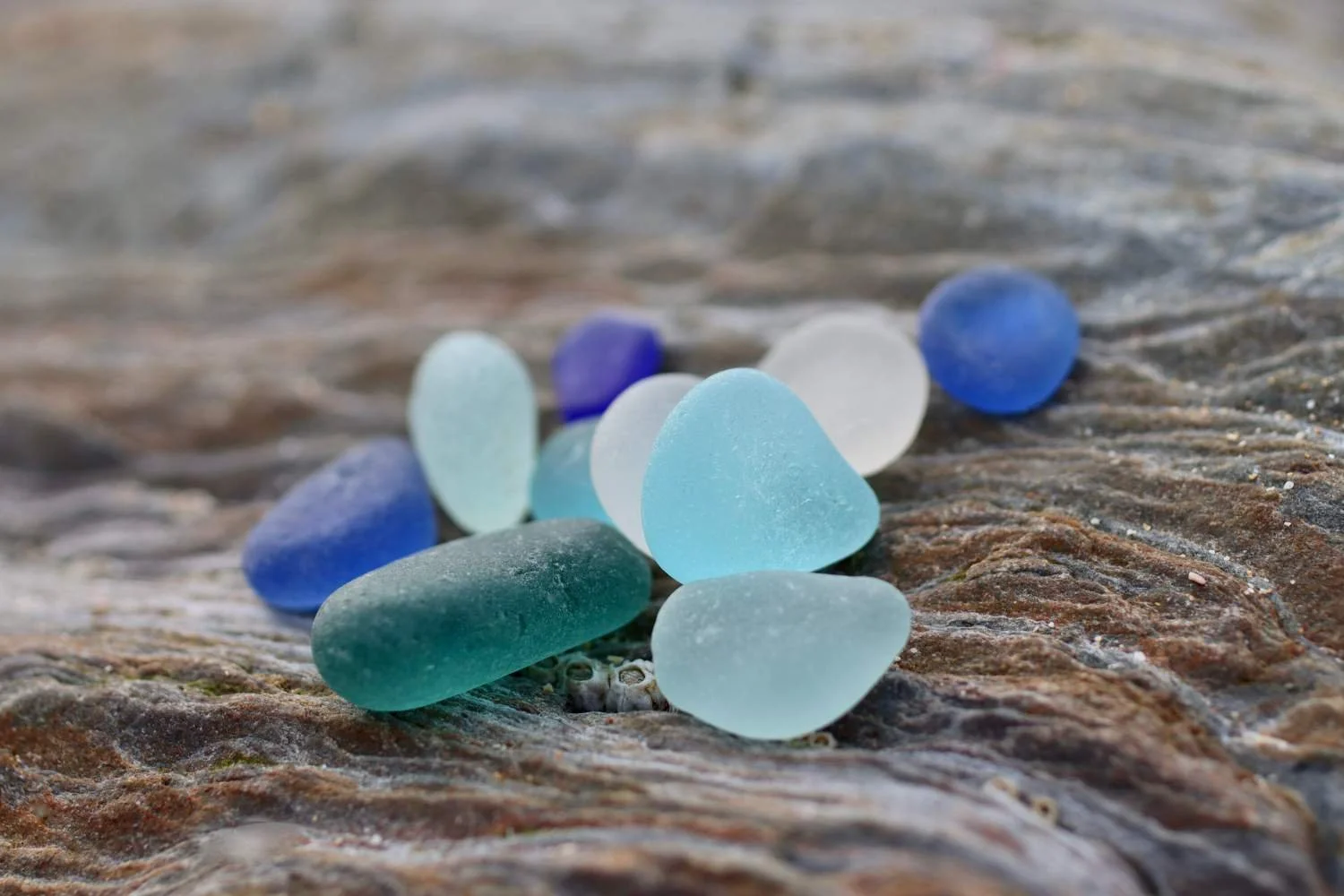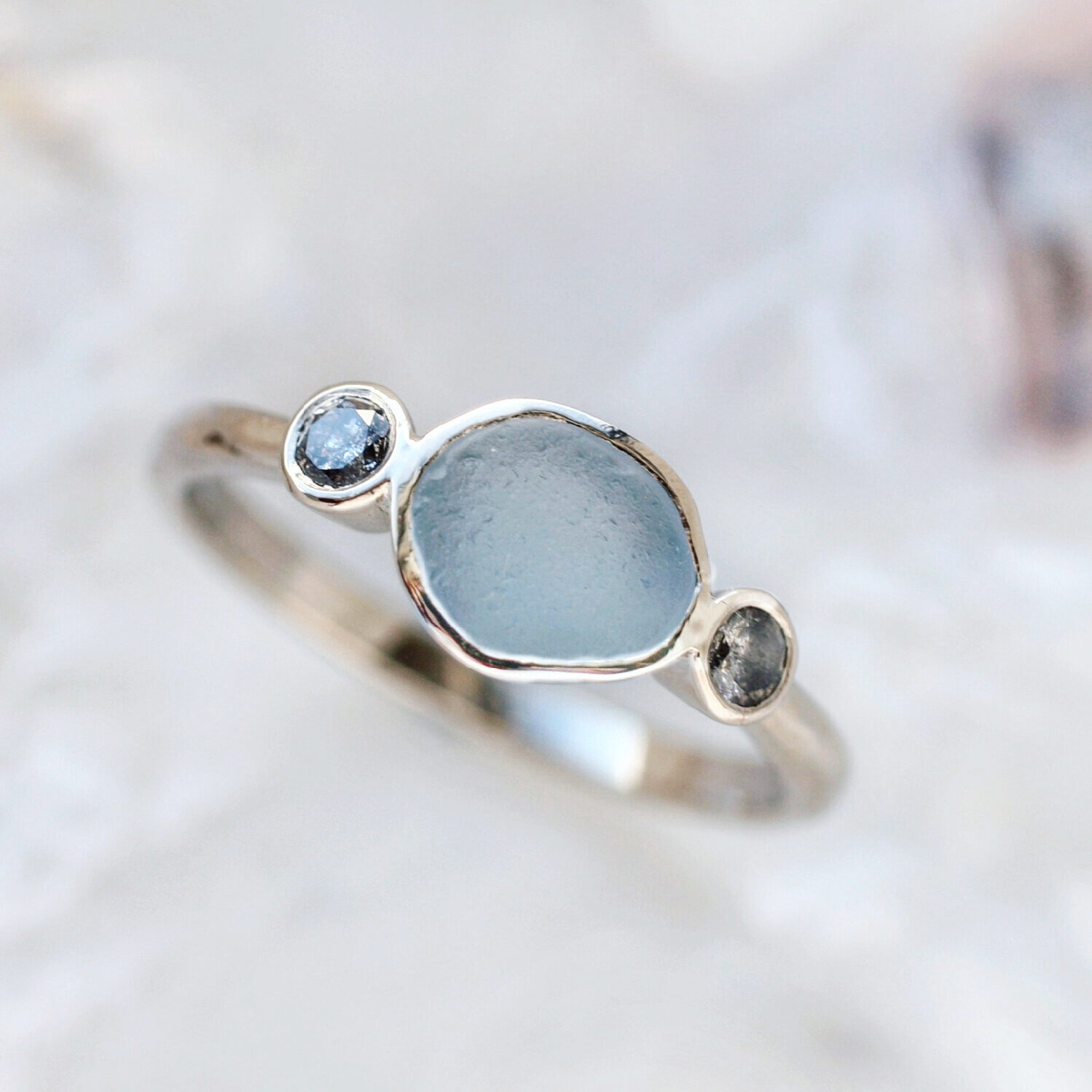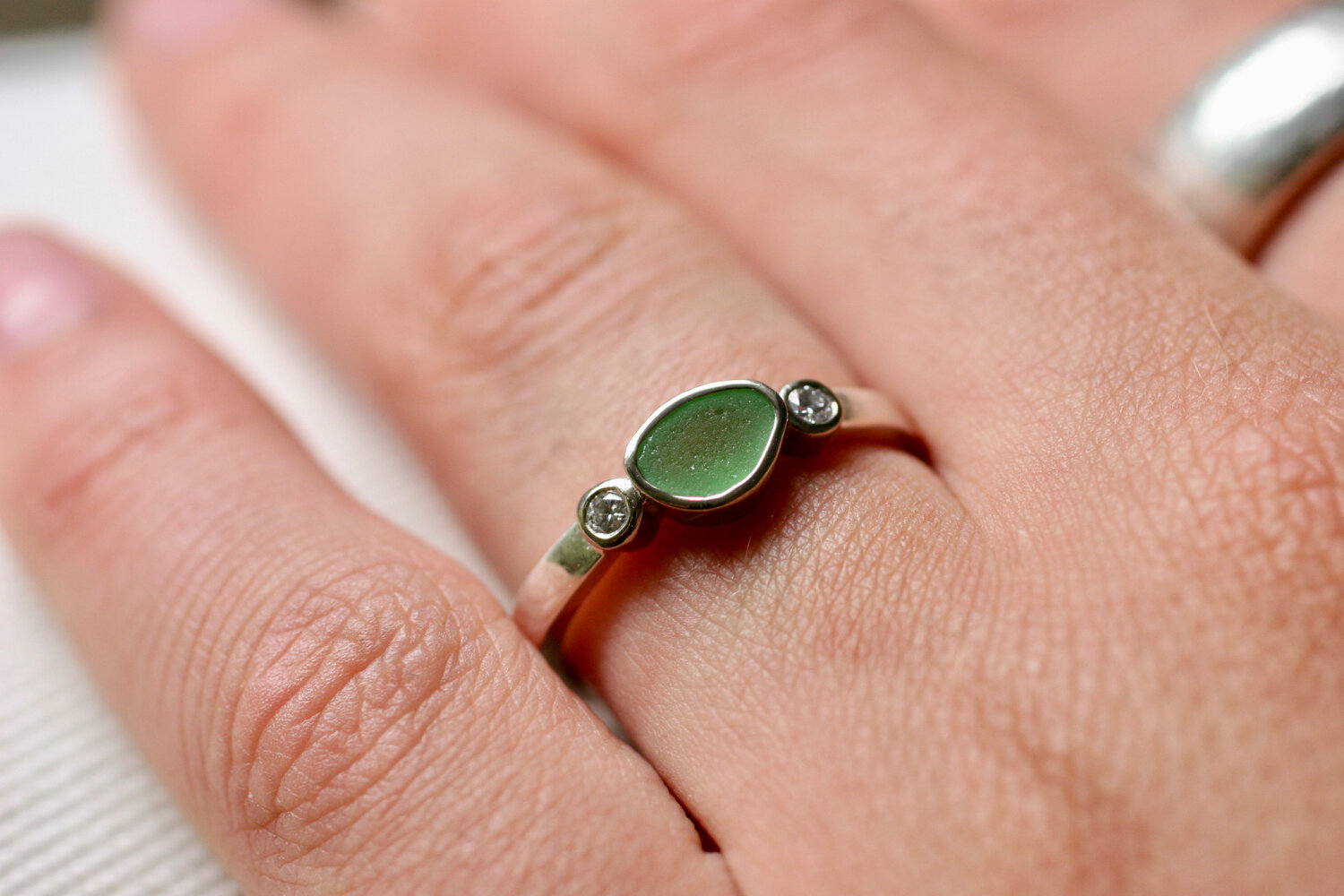Every single piece of sea glass is a total one off, having been on its own unique journey through the tides and currents of the ocean.
Some sea glass has travelled great distances, washing up on shores far away from where it was originally dumped, whilst other pieces have stayed trapped for decades in harbours, dropped by sailors, and smoothed and tumbled by the tides whilst yachts and fishing boats go by.
Older pieces that have been in the ocean tumbling about for perhaps decades, tend to be smoother, and more rounded in shape. Their colours and shapes often tell the stories if what they once were, perhaps when they were used, and in some rare cases, even the country or factory where is was manufactured.
Newer pieces wash up in all manner of squared or flat shapes and in jewellery all different sea glass shapes are used.
Whether you call it sea glass, seaglass, or even beach glass … it’s magic!
Sea glass is glass is found along the sea shore, after having been tumbled smooth and frosted by the ocean waves, over an undetermined length of time.
Some of the sea glass I have found is very old, from an era when glass was far more widely used, and attitudes to the environmental damage caused by dropping litter into the sea were quite different to what they are today.
And it washes up in an infinite variety of colours & shapes …
Sea glass has a magical glow that only comes from tumbling about in the ocean.
The way each piece catches the light in a different way, and the variety of subtle shades - pale aquas, frosted whites, palest blues to deepest turquoise and of course the array of greens all add to the magic and mystery of sea glass.
Around the coasts of Devon and Cornwall, I find lovely sea foams, aquas, pale greens, deep greens, and whites. To me these shades represent the ocean colours of the South West of England particularly Cornwall, and they are a perfect choice to reflect the uniqueness of my favourite coastlines.
Much rarer colours found on these far west shores include blues, certain greens, deep aquas and even lavender.
Grey, pink, teal, black, yellow, turquoise, red (found once in about every 5,000 pieces) and orange (the least common type of sea glass) are all extremely rare colours indeed.
Glass in these colours is far rarer than diamonds - especially now that so much of what we use in its place is plastic.




Sea Glass Colours from the Glasswing Collection
Working out where one sea glass shade ends and another begins (especially when you love subtle oceans blues and greens) is endless!
The gallery below only scratches the surface of the colours available in the Glasswing Collection, but hopefully it will give you a clearer idea of the colours and the names I use to describe them, to help you choose the glass you’d like incorporated into your jewellery.
No two pieces of sea glass are exactly the same - the texture and thickness of the piece will all have an impact on the final result once the glass is cut, set, drilled or strung, but I’ll do our best to match colours for you based on your requirements. If you’re at all unsure, I’m just an email away, so do get in touch!
Can I use my own sea glass?
Of course! Here’s a guide to having your own sea glass set into an engagement ring or jewellery.
Found your own sea glass on a special beach, or romantic holiday? Now what’s more romantic than having it set into a beautiful piece of jewellery, for yourself or for special someone?
-
If you can, it’s a good idea to send a selection of pieces (3 bits or so) with your #1 preference, #2 preference and so on, just in case there's a calamity when it is cut to shape in the workshop.
There hardly ever is, but it is always best to be on the safe side. If you really only have that one special piece, that’s fine too, I always do my very best not to break it!!
-
For rings, there needs to be one flat or almost flat surface at least.
For the Morwenna, Round Godreva and Rosen rings the depth needs to be over 8mm.
For the Godreva Oval, Lori and Loryn rings the depth needs to be over 10mm.
For other jewellery, it depends. Use your judgement when ordering certain pieces, and if there’s any doubt at all, just ask!
-
As the piece is cut smaller and smaller, it’s key to note that colours do get less pronounced.
Deeper brighter colours tend to keep their colour once cut down to a small gem size, so if you can, send the most vibrant colours you can.
-
Your pieces of sea glass need to be well wrapped. If left loose in a normal envelope they have a habit of working their way out and disappearing into the postal system, leaving me with an empty envelope when it reached the workshop!
Use a padded “jiffy” bag.
Tape the glass to a piece of paper.
Enclose your return address so we know who it's from, plus any other relevant information.
















